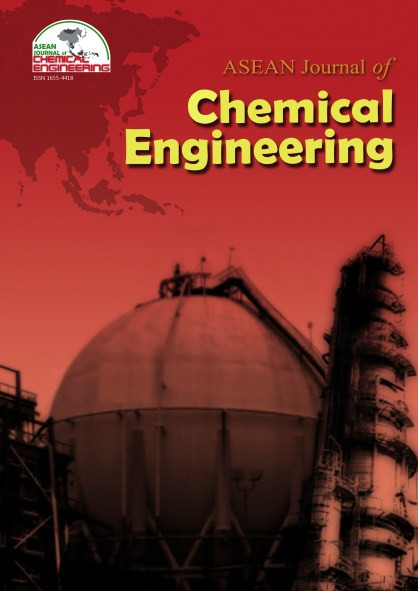An Improved Method to Calculate the Conservation of Mass in the Simulation of Rapid Pressurization and Depressurization in a Packed Bed
Abstract
The work described here forms part of a project to model rapid pressure swing adsorption (RPSA), which is a single-bed process used for air separation. We have earlier identified a form of model and boundary conditions for an axially dispersed plug flow model that conserves mass. We solve the RPSA models numerically by spatially discretizing the partial differential equations to a system of ordinary differential equations (ODEs), which are then integrated over time. Although the formulation of our models conserves mass, our numerical
simulations, however, do not perfectly conserve mass because of discretization error and rounding error. The discrepancy in the conservation of mass is computed as a guide to the numerical accuracy of the calculations. The computation of the conservation error requires the evaluation of time integrals of molar flowrates in and out of the bed. Since the velocity at the feed end of the bed changes
rapidly with time, the application of quadrature to evaluate the time integrals does not provide the accuracy required. In this paper, the inadequacy is
demonstrated using a simple problem, i.e. pressurization and depressurization into a non-adsorptive bed. An improved method is proposed. By transforming equations involving time integrals into ODEs, excellent accuracy is obtained. Further, this transformation minimizes the number of decision parameters that need to be specified by the users of the computer programs.
References
Choong, T. S. Y., Paterson, W. R. and Scott, D. M., "Axial Ddispersion in Rich, Binary Gas Mixtures: Model Form and Boundary Conditions" , Chem. Engng Sci., 1998,
53, pp 4147 - 4149.
Rice, R. G. and Do, D. D., Applied Mathematics and Modelling for Chemical Engineers, John Wiley & Sons, U.S.A. (1995).
Shampire, L. F., Allen, R.C. and Pruess, S., Fundamentals of Numerical Computing, John Wiley& Sons, New York (1997).
Copyright holder for articles is ASEAN Journal of Chemical Engineering. Articles published in ASEAN J. Chem. Eng. are distributed under a Creative Commons Attribution-NonCommercial 4.0 International (CC BY-NC 4.0) license.
Authors agree to transfer all copyright rights in and to the above work to the ASEAN Journal of Chemical Engineering Editorial Board so that the Editorial Board shall have the right to publish the work for non-profit use in any media or form. In return, authors retain: (1) all proprietary rights other than copyright; (2) re-use of all or part of the above paper in their other work; (3) right to reproduce or authorize others to reproduce the above paper for authors’ personal use or for company use if the source and the journal copyright notice is indicated, and if the reproduction is not made for the purpose of sale.



